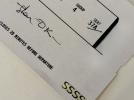Skywork D328 at Bern on Jun 2nd 2012, high risk of collision with helicopter on takeoff
A Skywork Dornier Do-328, registration HB-AES performing flight SX-700 from Bern (Switzerland) to Belgrade (Serbia), was departing Bern's runway 32.
A Helvetic Fokker 100 was holding on taxiway K, parallel to runway 32, at the C intersection at the same time.
About a minute earlier a helicopter registration HB-ZSA had reported ready for departure from Helipad 1 requesting departure from the helipad "around the tower" towards waypoint HOTEL. The tower had cleared the helicopter for "departure on own discretion, around tower then outbound HOTEL" and provided traffic information on a Seneca aircraft taxiing on K behind the helicopter.
The helicopter crew initiated a right hand turn to turn around the waiting Fokker 100, while the Do-328 was accelerating on runway 32, and turned left towards the runway 32 center line shortly afterwards.
Switzerland's SUST released their final report reporting that the estimated separation between the helicopter and the Do-328 reduced to about 80-100 meters at the same altitude and rated the occurrence a serious incident involving a high risk of collision.
The SUST concluded the probably causes of the serious incident were:
The serious incident is attributable to the fact that aerodrome control cleared a commercial aircraft to take off on runway 32 without ascertaining the position of the helicopter which the controller had shortly beforehand cleared to depart at its own discretion. The result was that a dangerous convergence of these two aircraft occurred with a high risk of collision.
The following factors contributed to the occurrence of the serious incident:
- The absence of a defined final approach and take-off area (FATO) for helicopter flight operations.
- The absence of fixed departure routes to departure points HE, H and HW.
The following factor was established as neither causal nor contributory but was recognised within the framework of the investigation as a risk factor:
The checklists for operation of the Dornier 328-100 commercial aircraft unnecessarily occupy crews’ attention, because the latter have to perform checklist points whilst taxiing which could be carried out before taxiing.
The SUST analysed: "in the aeronautical information publication (AIP) there was no documented departure route from the two helipads to departure points HE, H and HW. The departure route 'around the tower' used when there were a north-westerly winds, was not prescribed or published, but was common practice, mainly by pilots with Bern-Belp Airport as their homebase. Neither aerodrome control nor pilots were able to refer to a published departure route from the two helipads to departure points HE, H and HW. This lack of a basis left helicopter pilots free to configure their departure path to the above-mentioned exit points. ... The absence of mandatory departure routes from the helipads to departure points HE, H and HW contributed to the dangerous convergence of the two aircraft and therefore to the occurrence of the serious incident."
The SUST reported: "According to the aerodrome controller's statement, he observed how HB-ZSA turned right above TWY KILO in front of the Fokker 100. The initiation of this right turn caused the ADC controller to assume that this was the beginning of the right turn around the control tower towards HOTEL (cf. Figure 2: dotted line) and that HB-ZSA therefore no longer represented a potential conflict with the DO328. Consequently, without corresponding traffic information concerning HB-ZSA, the air traffic controller turned to the DO328 which was ready for take-off at the takeoff point of runway 32 and at 10:23:26 UTC cleared the crew of SRK 700 to take off."
The SUST analysed with respect to the crew of the helicopter: "There was no corresponding traffic information in relation to the Fokker 100 waiting at the CHARLIE intersection. According to the planning of the ADC controller, however, it was clear that the Fokker 100 would only leave its position after the take-off of HB-ZSA and would therefore represent an obstacle for HB-ZSA to fly around during the acceleration phase. The absence of information would probably have given the pilot a moment of surprise when he encountered the Fokker 100. As the pilot later stated, at no time did he have visual contact with SRK 700 which was taking off. He did not receive any stipulations from the aerodrome controller in relation to the departure route in a north-westerly direction, neither a southerly limit nor in relation to the initiation of a right turn. This turn, according to the pilot, took place after passing the airbase hangers and was therefore in accordance with the departure route 'around the tower' assigned to him."
The SUST analysed with respect to the crew of the Dornier 328: "After setting take-off power, the crew were concentrating on the take-off roll; the copilot, as pilot flying (PF), was focusing primarily on controlling the aircraft and the commander, as pilot not flying (PNF), had to monitor the parameters relevant to the take-off roll. It is therefore not surprising that the DO328 was already passing an estimated speed of approximately 60 to 80 kt when the crew of SRK 700 observed HB-ZSA for the first time, ahead on the right, on a trajectory which was slowly converging with the centre line of runway 32. The decision speed calculated for the actual take-off (V1) of 113 knots, up to which the aircraft can be brought to a standstill on the runway in the event of an aborted take-off, was still a long way from being reached. The question which arises here is whether aborting the take-off at this point would have involved a lower risk than a continuation of the take-off in which the crew of the DO328 had few possibilities of avoidance. Since only the statements of the crew members involved are available in relation to this point, reaching a final assessment about it is difficult and speculative. ... The crew of SRK 700 did not speak about the convergence with the helicopter during their initial climb but complained only after making contact with departure control. They allowed time for this and correctly implemented the priorities generally recognised in aviation: “fly – navigate – communicate”."
Trajectories and map (Graphics: SUST):
http://avherald.com/h?article=47a5bbe4














Komentarze